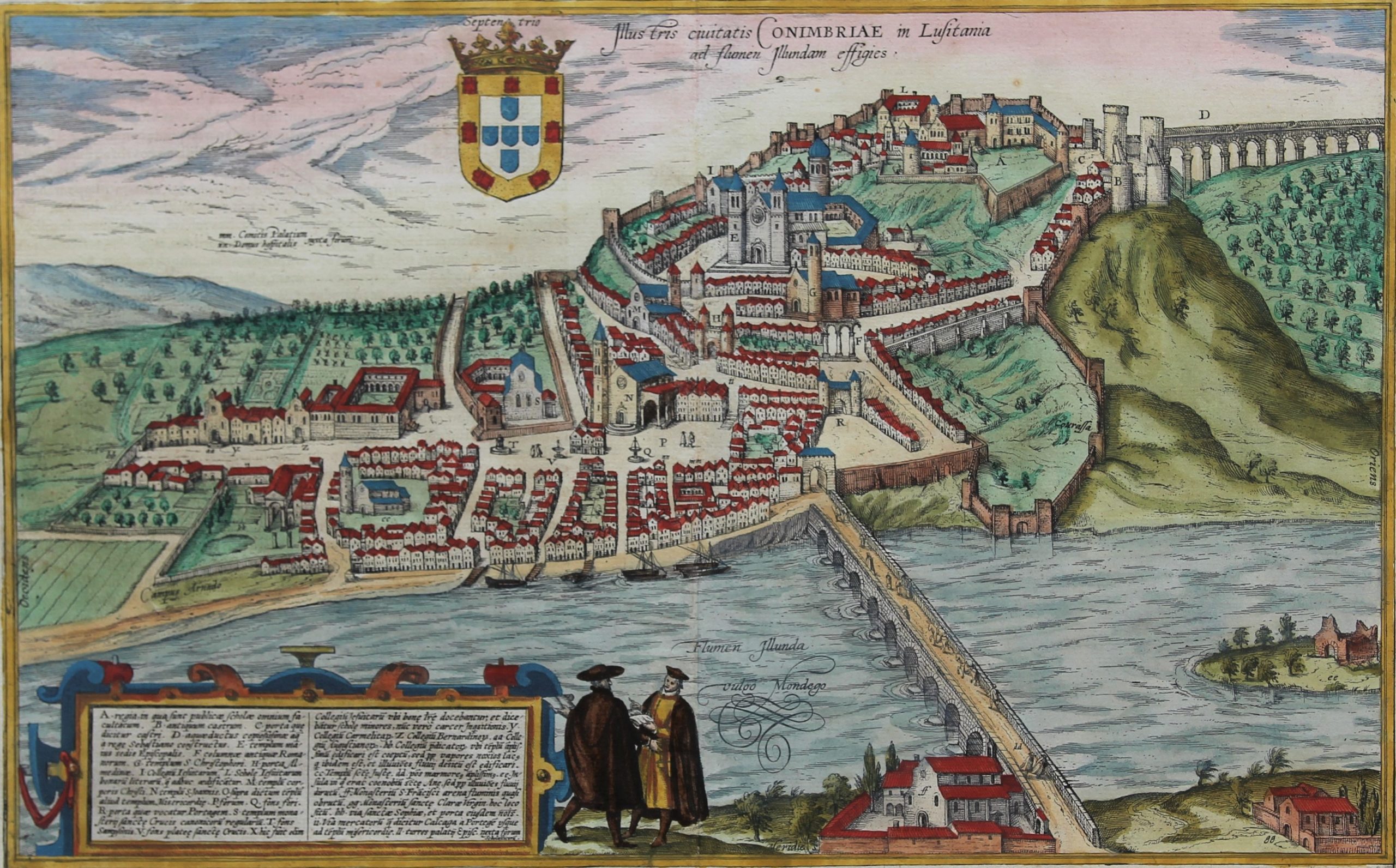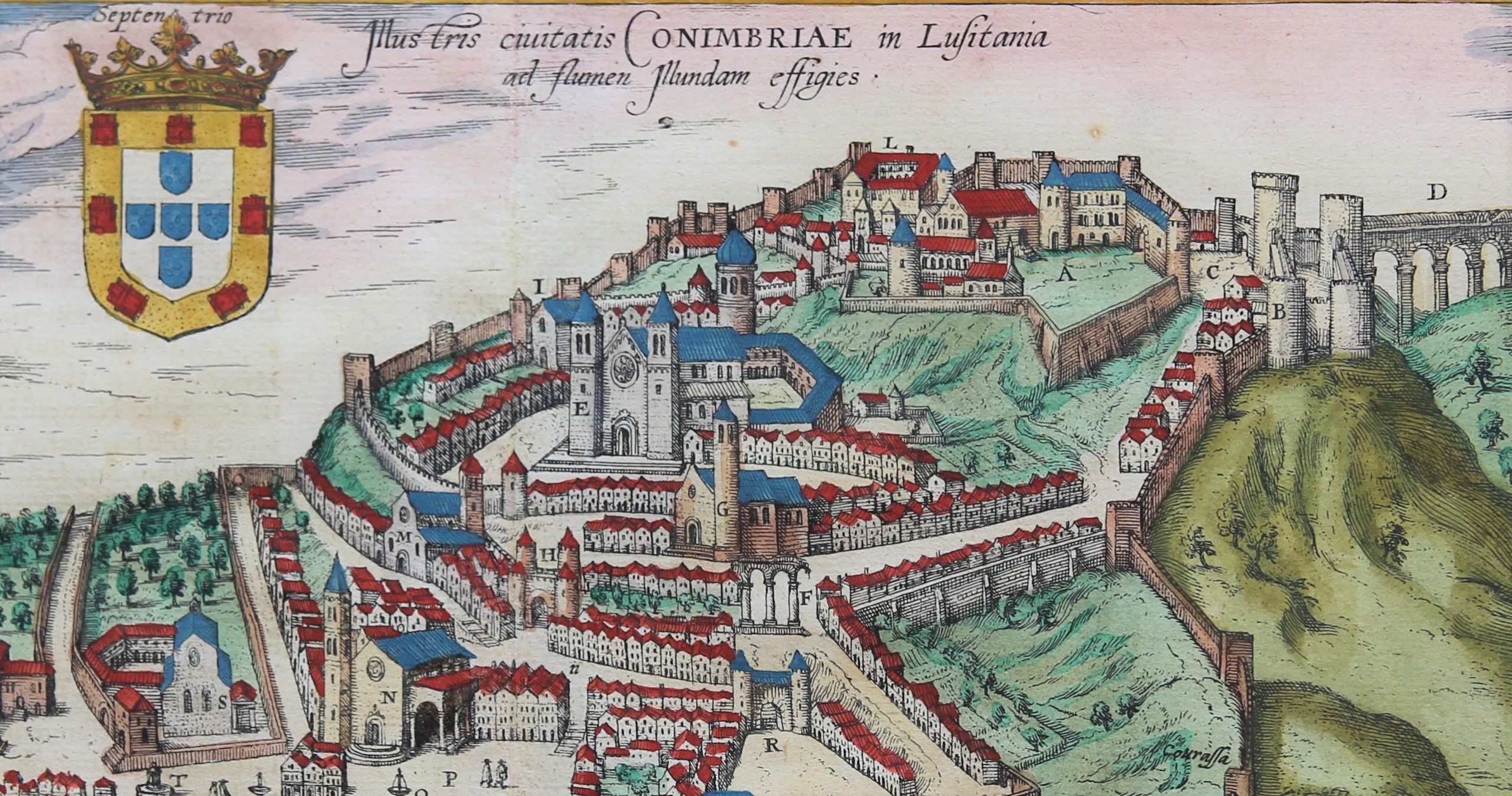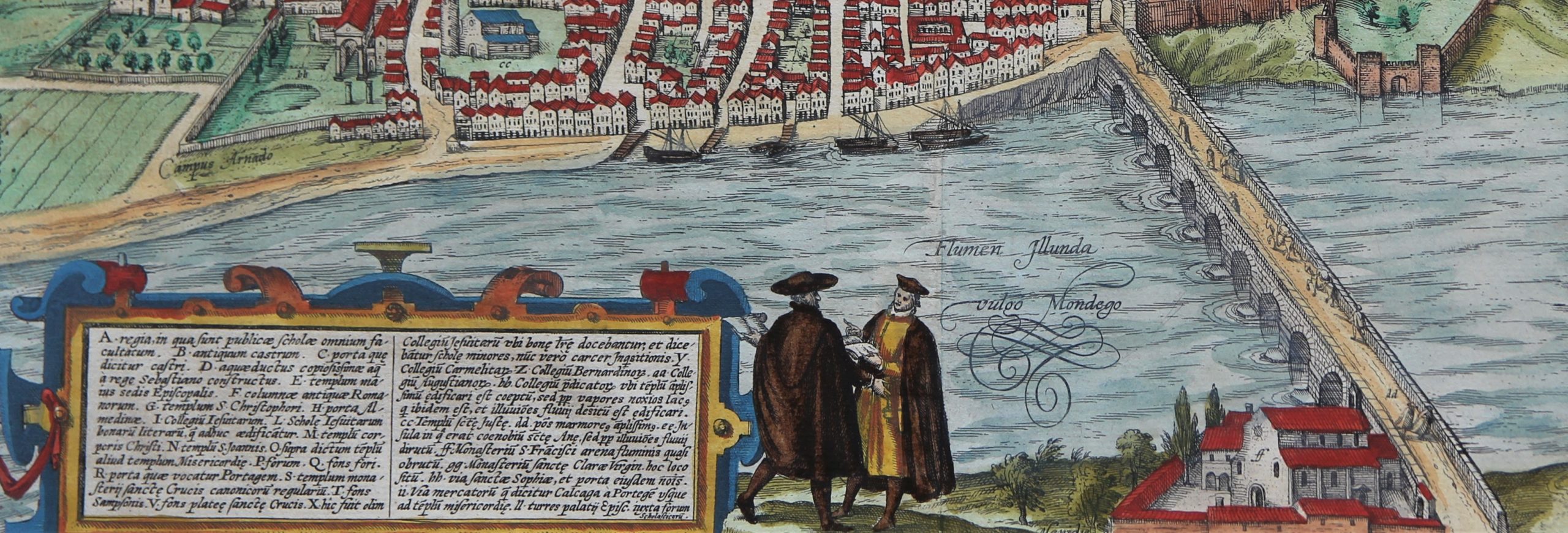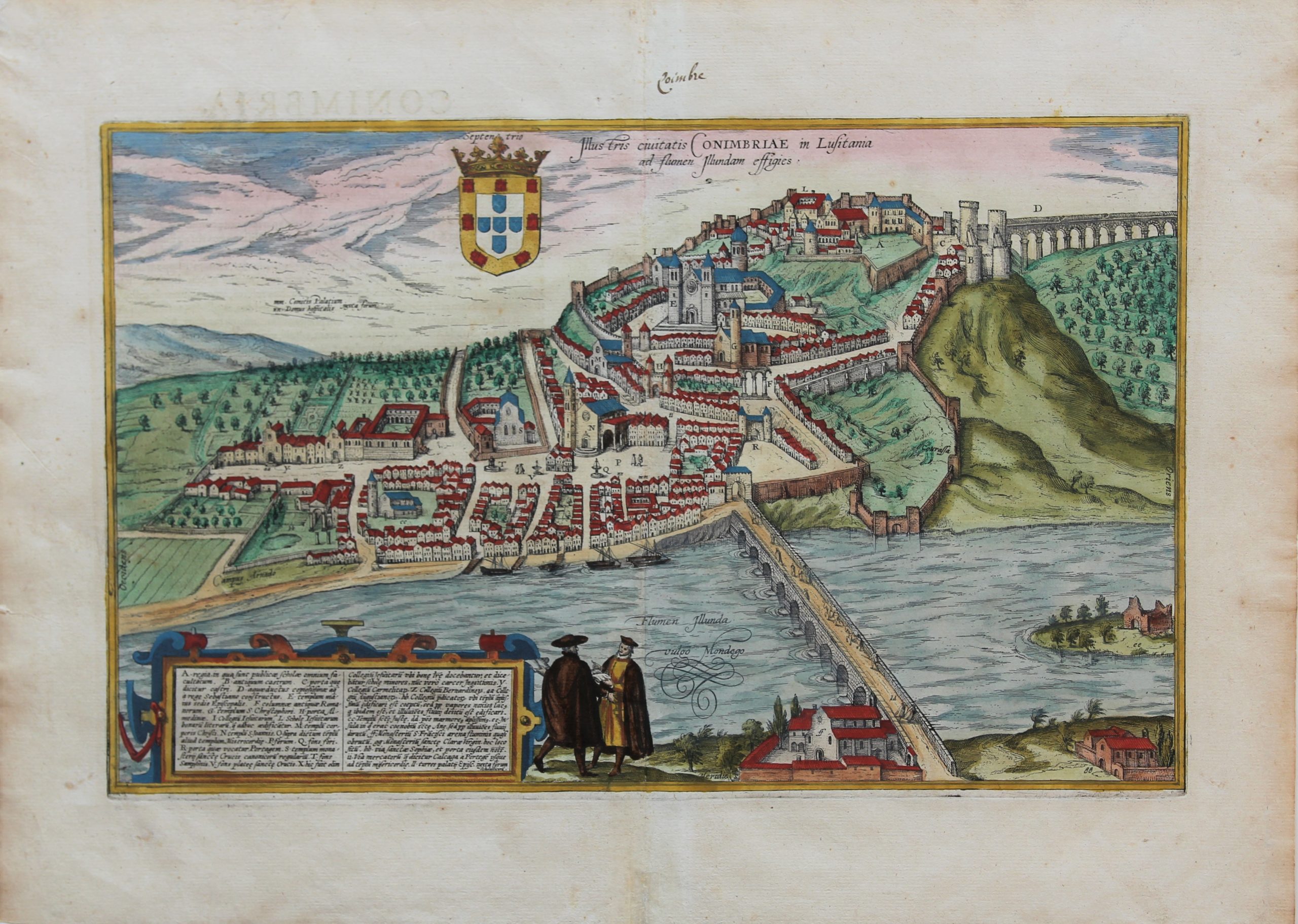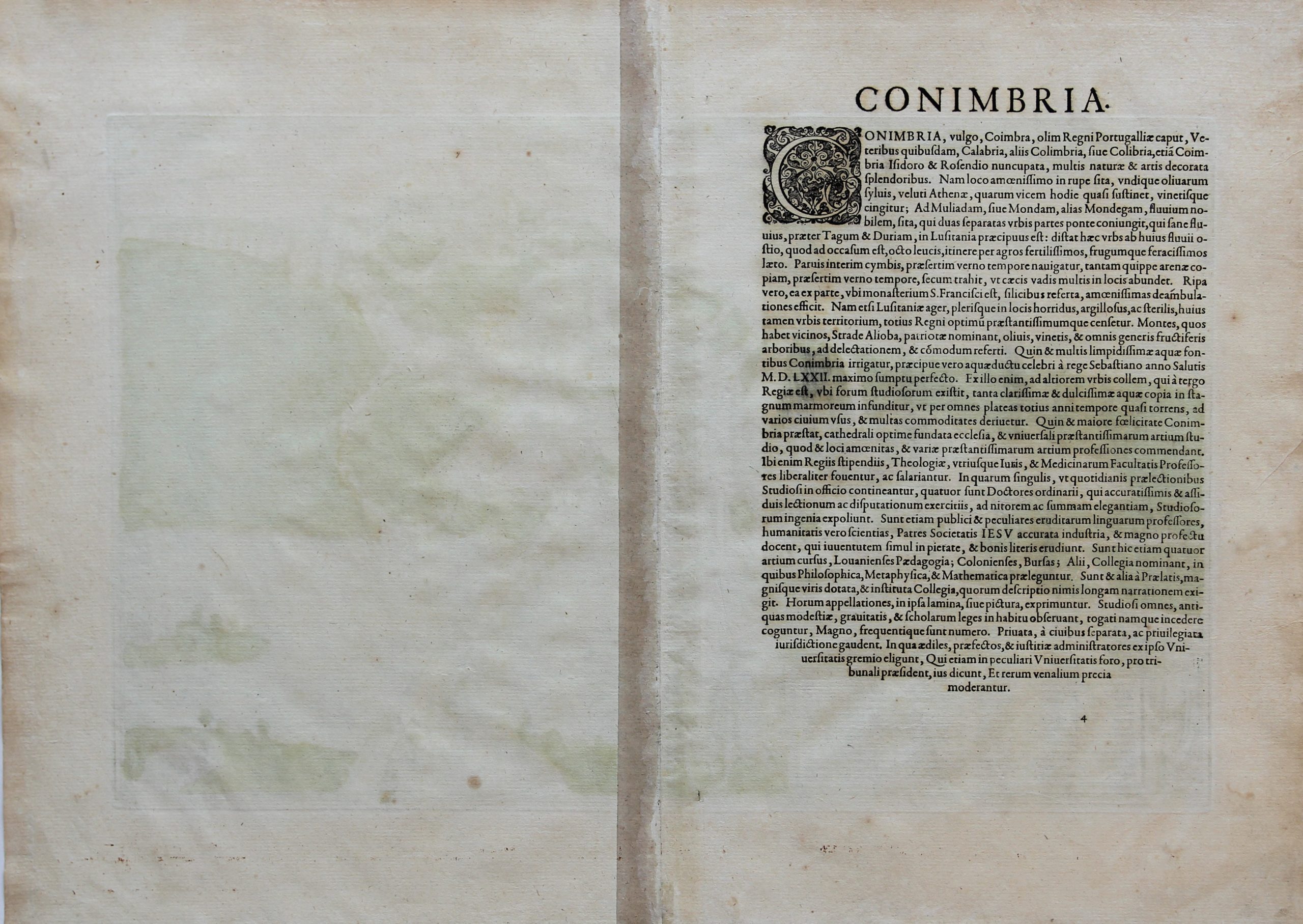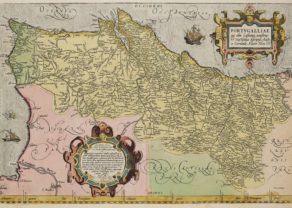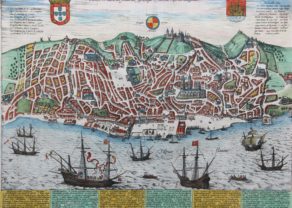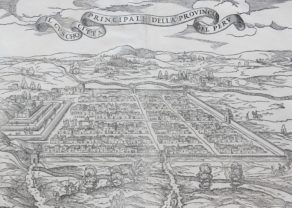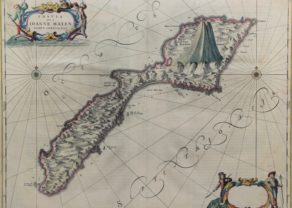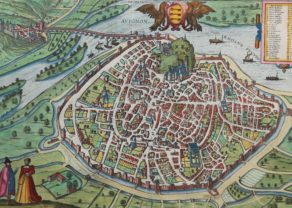Coimbra
A picturesque Portuguese university city
Detail
Date of first edition: 1596
Date of this edition: ca. 1596
Dimensions (not including margins): 28,8 x 46,4 cm
Dimensions (including margins): 40 x 55,6 cm
Condition: Very good. Sharp printing. Old hand coloured. Wide margins. Handwritten “Coimbra” in top margin. Minor professional repair top left corner. Slight age-toning in margins
Condition rating: A+
Verso: text in Latin
Map reference: Van der Krogt 909; Taschen, Br. Hog., p.350.
From: Civitatis Urbis Terrarum (V: Urbium Praeipuarum Mundi Theatrum Quintum Auctore Georgio Braunio Agrippinate). Van der Krogt 41:1-3, page 4
In stock
Coimbra commented by Braun
“Coimbra stands out from other cities for it has a very beautiful collegiate church, a cathedral and furthermore an excellent and widely famed university, which lies in a favourable location and at which the liberal arts are taught. At the expense of the King, many professors and men learned in the Holy Scriptures, law and medicine teach there, for which they receive a rich and handsome living and pay.”
TRANSLATION OF CAPTION: Illustration of the celebrated city of Coimbra in Lusitania on the Illunda.
Taschen on Coimbra
The university city of Coimbra, which lies between Lisbon and Porto, is seen from the southwest, whereby the artist has selected an elevated viewpoint from the opposite bank of the River Mondego. The engraving offers an impressive panorama of the Lower Town and – rising steeply up the hillside behind – the Upper Town with the university buildings (A/L). The University of Coimbra is the oldest in Portugal and was founded in 1290 by Denis, the sixth king of Portugal from the house of Burgundy. The two academics seen in learned discussion in the foreground make further visual reference to the university. After Ferdinand I of Castile and Léon had reconquered the city from the occupying Moors in 1064, Coimbra became the capital of Portugal, from 1139 to 1255. During this period it was significantly enlarged: the Romanesque monastery of Santa Cruz (S) was begun in 1131 and in 1139 the old cathedral of Sé Velha (E), one of Portugal’s most important works of Romanesque architecture. The Roman aqueduct (D) also still survives today.
